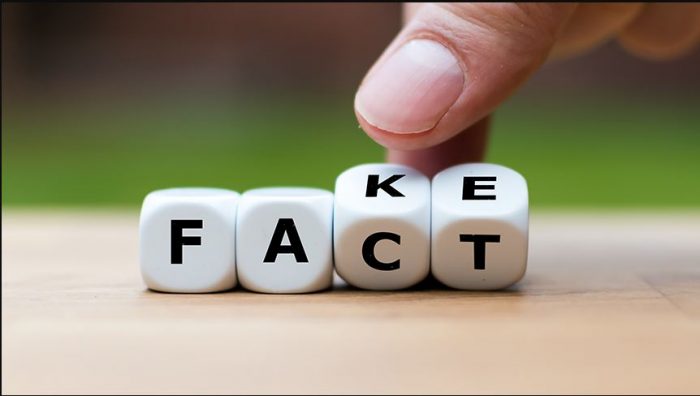Chances are you’ve seen some strange headlines about the new coronavirus floating around your social media feed over the last few months. The outbreak of misinformation is not only making it difficult for people to get accurate information about COVID-19 — it’s also creating an “infodemic” that’s eroding trust in the healthcare system at large.

So how can people discern fact from fiction online?
The answer might be relatively easy, at least according to the results of a recent study.
The simple intervention might be one key to fighting belief in bogus posts about COVID-19 as well.
A simple but effective intervention
After receiving wide criticism for failing to clamp down on fake news during the 2016 U.S. presidential election, Facebook decided to take action. It collaborated with the non-profit First Draft to create a tip sheet on spotting false news.
A study of Proceedings of the National Academy of Sciences looks at whether the intervention worked. Researchers from multiple institutions, including the University of Michigan, Princeton University, and Washington University in St. Louis, Missouri, showed Facebook’s tip sheet to people in the United States, as well as a modified version to people in India, then asked them to rate the accuracy of various headlines (including some deemed false by a third-party fact-checking organization) over a period of several weeks.
Why is fake news so rampant right now?
Misleading social media posts are nothing new, but many have been popping up in regard to the new coronavirus and the recent protests. What’s the deal?
“In both instances, the speed at which traditional media moves in order to get reliable stories was not the speed at which social media clearly needed to move. When there isn’t reliable, vetted news stories available, misinformation will inevitably fill the void,” said Linvill.
People are more likely to believe the information they read if it appeals to their emotions, especially during a time of crisis and uncertainty, added Shah.
“People are trying to figure out when this will end, when they can get back to normal life. You see content that appeals to that emotion,” he said. “People want validation for what they’re feeling at the time.”
“If you read something that says masks aren’t effective, that helps your position about not wanting to wear masks,” he said.
And sometimes, misinformation is simply the result of a bad actor exploiting the current state of affairs to make a buck, said Linvill.
How to spot fake news

There are some strategies you can use to spot fake news as you’re scrolling through your feed:
Cross-check the information
Outlandish headlines aren’t always false, but you might need to do some extra investigation to prove they’re true. Check if other mainstream news sources are reporting similar information before buying into it, said Shah.
Read the comments
If something seems off about an article, check the comments, said Shah. “If you see a string of comments calling out a story, that’s your first sign that maybe this isn’t as accurate as you thought it was. If you see a thought-provoking conversation in the comments, that’s a sign that it’s more accurate,” he said.
Think critically about the source’s intentions
Mainstream news outlets have a mission to keep the public informed with accurate information. That’s not true for companies trying to sell you products or ideologically motivated profiles trying to influence your views, both of which could spin the news to reflect their agenda. Understand a source’s motivation for publishing or sharing something to frame your opinion on the trustworthiness of that information.
Share with care
When you share an article or a post from someone else, you’re pushing their agenda to your followers. Make sure the content you share is accurate and authentic before spreading the message to others, said Linvill.
Don’t use social media for your news
Anything can be shared on social media. An official news aggregator, like Google News, can show you stories from more trustworthy sources and a variety of perspectives, said Linvill.




![The Top & Most Popular Seafood Bucket Restaurants in Dubai for you [Never Miss]](https://uae24x7.com/wp-content/uploads/2020/09/8-seafood-in-a-bucket-scaled-e1600739237403.jpg)
![Procedures for Renewing the Driving License in Abu Dhabi [3 Simple Steps]](https://uae24x7.com/wp-content/uploads/2020/07/Capture-9-e1595666454466.jpg)





